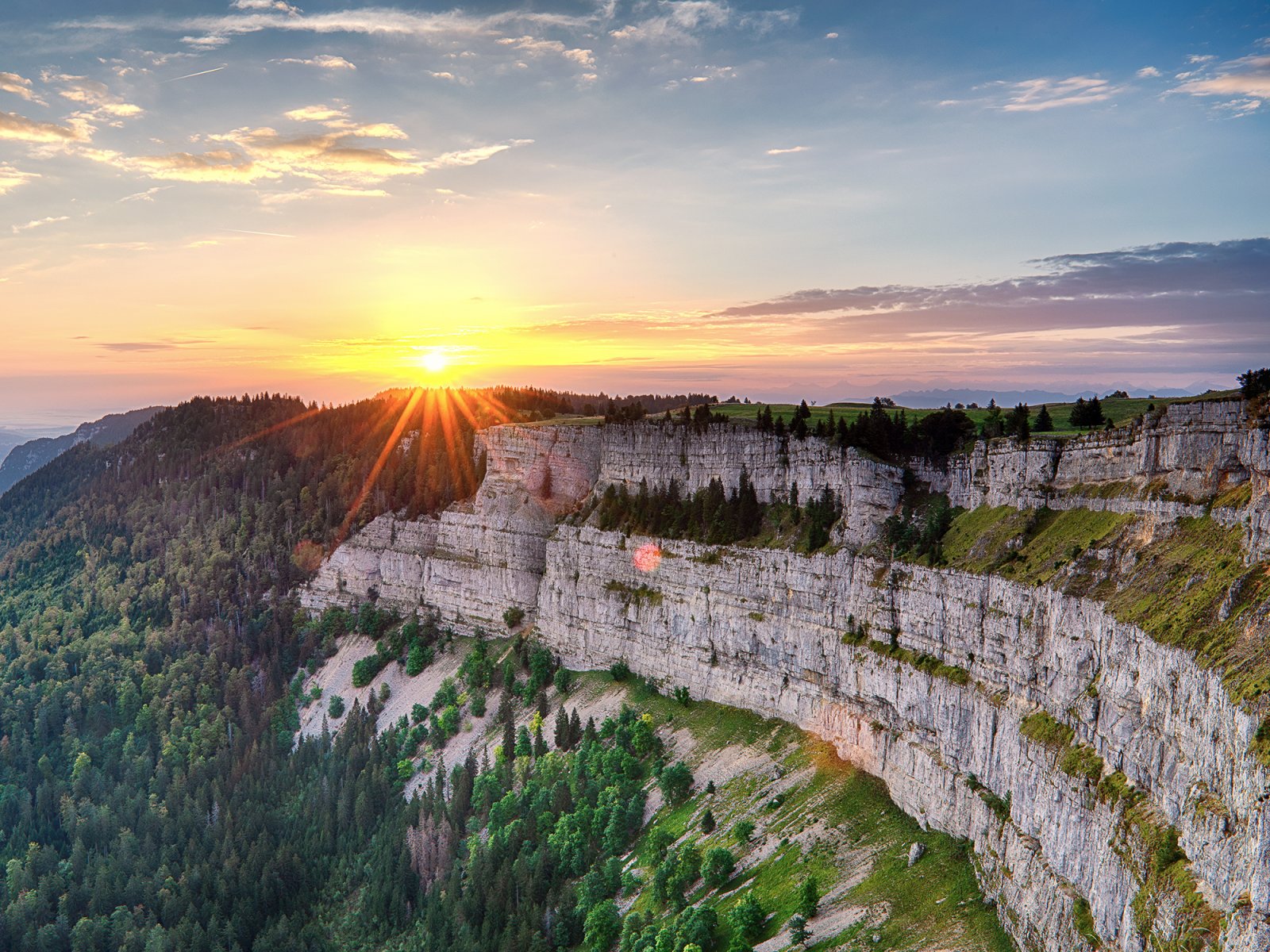
Let me start by saying this: there are many hikes in Switzerland, and then there is the hike to the Creux du Van.
If I were to compare hiking to driving a car, it would be like comparing driving all “others” to driving a Rolls Royce Phantom. And one fine, sunny morning, I “drove” a ’Rolls Royce Phantom. You get what I mean.
Where is the Creux du Van? And what is it?
First off, let me set the stage. The Creux du Van rock formations are located in the canton of Neuchâtel, above Lake Neuchâtel, and on the border with canton Vaud. The origin of the word “van” comes from the Celtic language where it stood for "rock."
And rock there is! The Creux du Van is 1400 meters wide and 150 meters deep. It forms a giant natural amphitheater, making this a natural wonder in its own right. It is frequently called the Grand Canyon of Switzerland.
How was the Creux du Van formed?
“The Jura mountains consist of rocks of limestones that folded upwards from the bottom of the ocean.” Meet Andreas Dehnert, a geologist who works at the Swiss Federal Nuclear Safety Inspectorate in Brugg, Switzerland.
When I first hiked the Creux du Van, I felt that it seems like a miracle. I knew that I had to find out more about the formation of the Creux du Van, and so I got in touch with the expert.
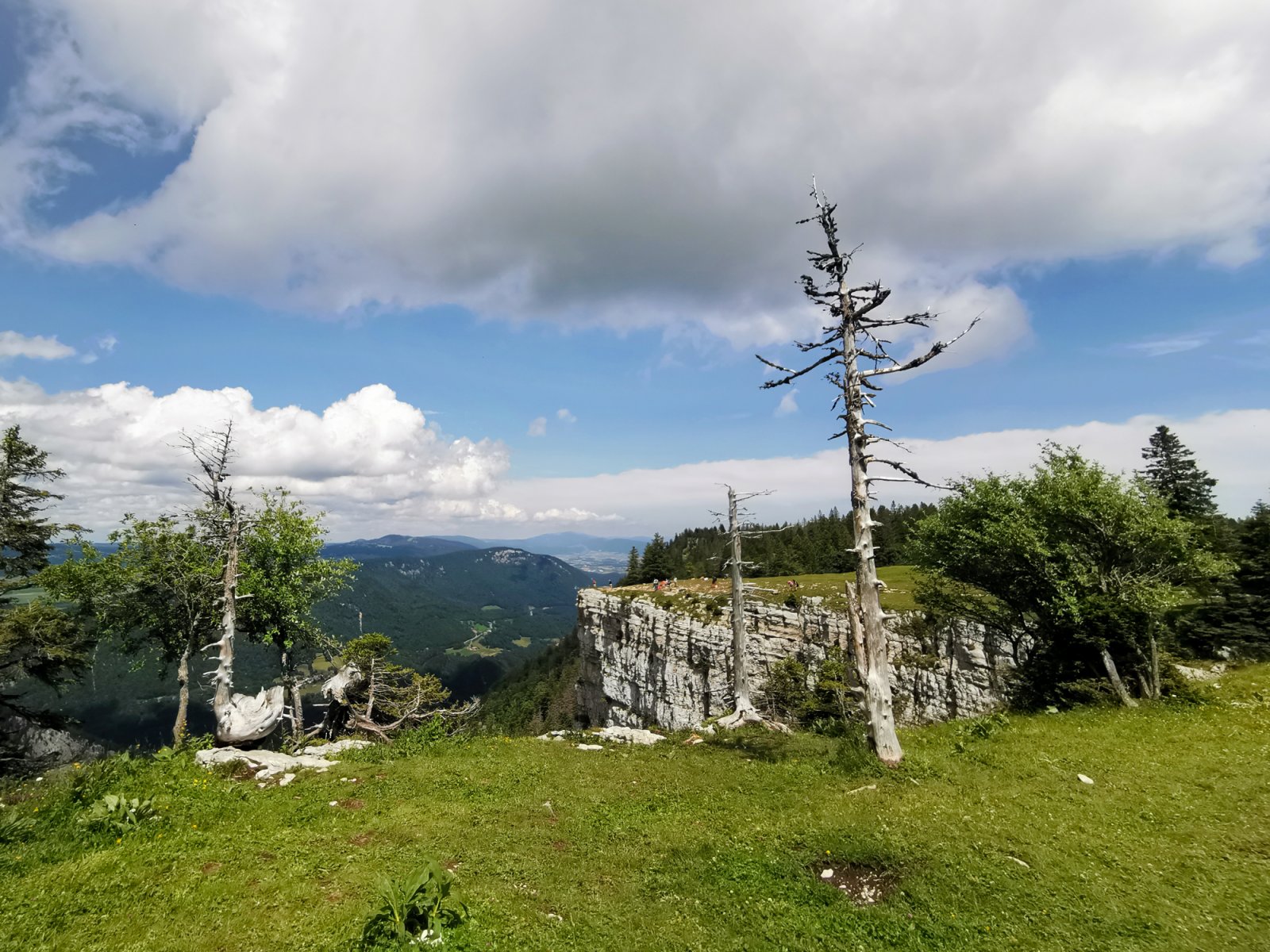
The formation of the Jura mountains is due to geological events that took place in the distant past. One cause is speculated to be the movement of the African continent toward to north, thereby clashing with the European continent and creating the Alps on one side.
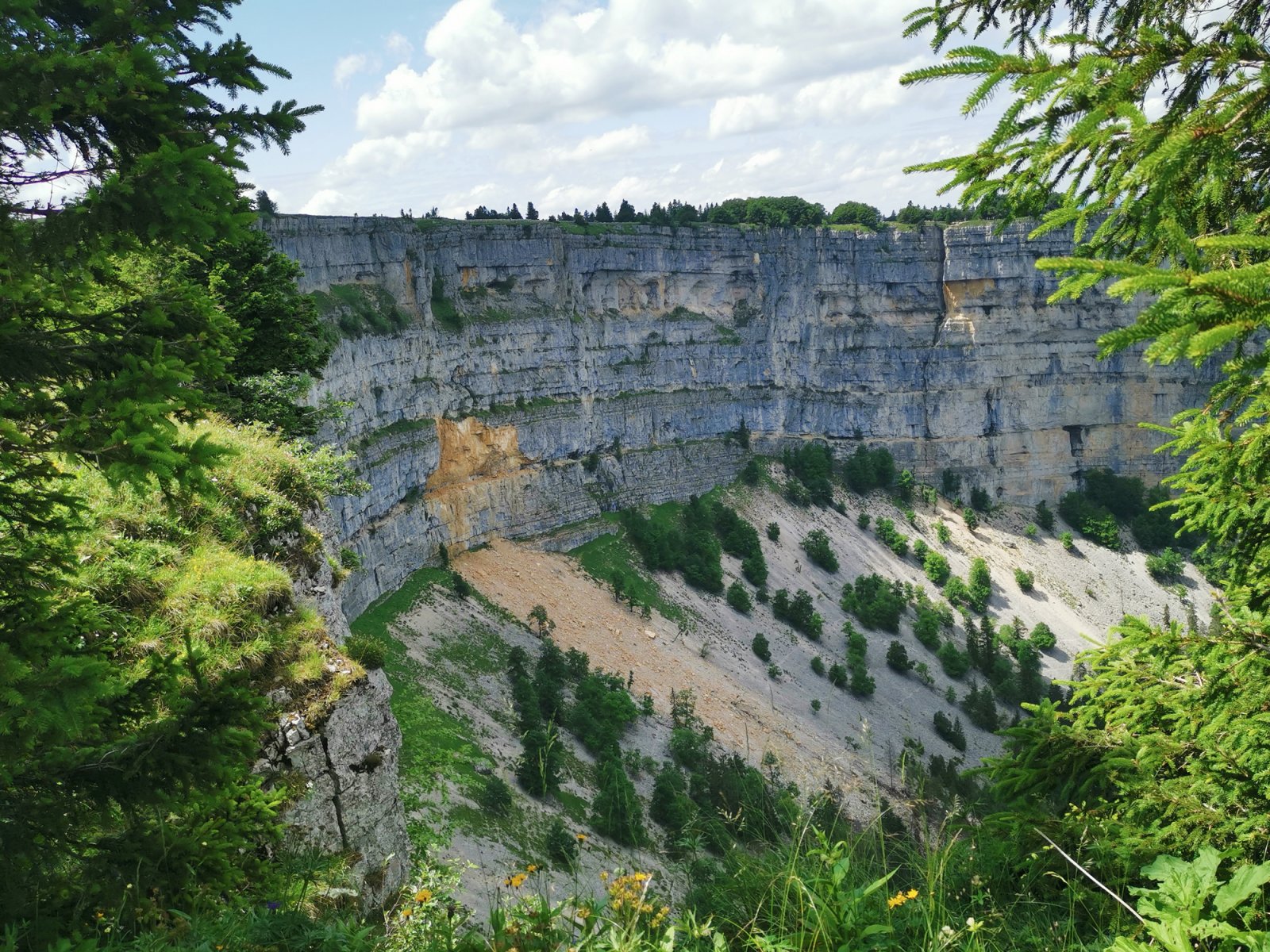
This pushing movement also raised the seafloor upwards resulting in the creation of the Jura mountains. It was indeed fascinating to know that a few hundred million years ago, there existed a sea where the Creux du Van now stands, and where I also proudly stood.
The fold opened up on one side from the north to the south. The river Areuse cut into the fold on one side and eroded the fold over time. In the later part of the ice age, a glacier is believed to have existed in the cavity that was cut by the river, which also contributed to the arch-like formation of the Creux du Van.
The reason for the arch opening onto the northeast side is because this is the side that receives the least amount of sunlight. Hence, the glacier remained for a long period of time, meanwhile weakening the rock. This process led to the “C” shape that we all get to witness and enjoy today.
Any advice on hiking the Creux du Van?
I am back at the Creux du Van once again. With all this knowledge about its formation, I am eager to revisit the Trail of the 14 Contours hike to the Creux du Van.
This hike from Noiraigue to the edge of the Creux du Van is rewarding for the stunning views of the rock formations. On the beforementioned sunny morning, we set out as early as possible. This would allow us to see the cirque in all its beauty.
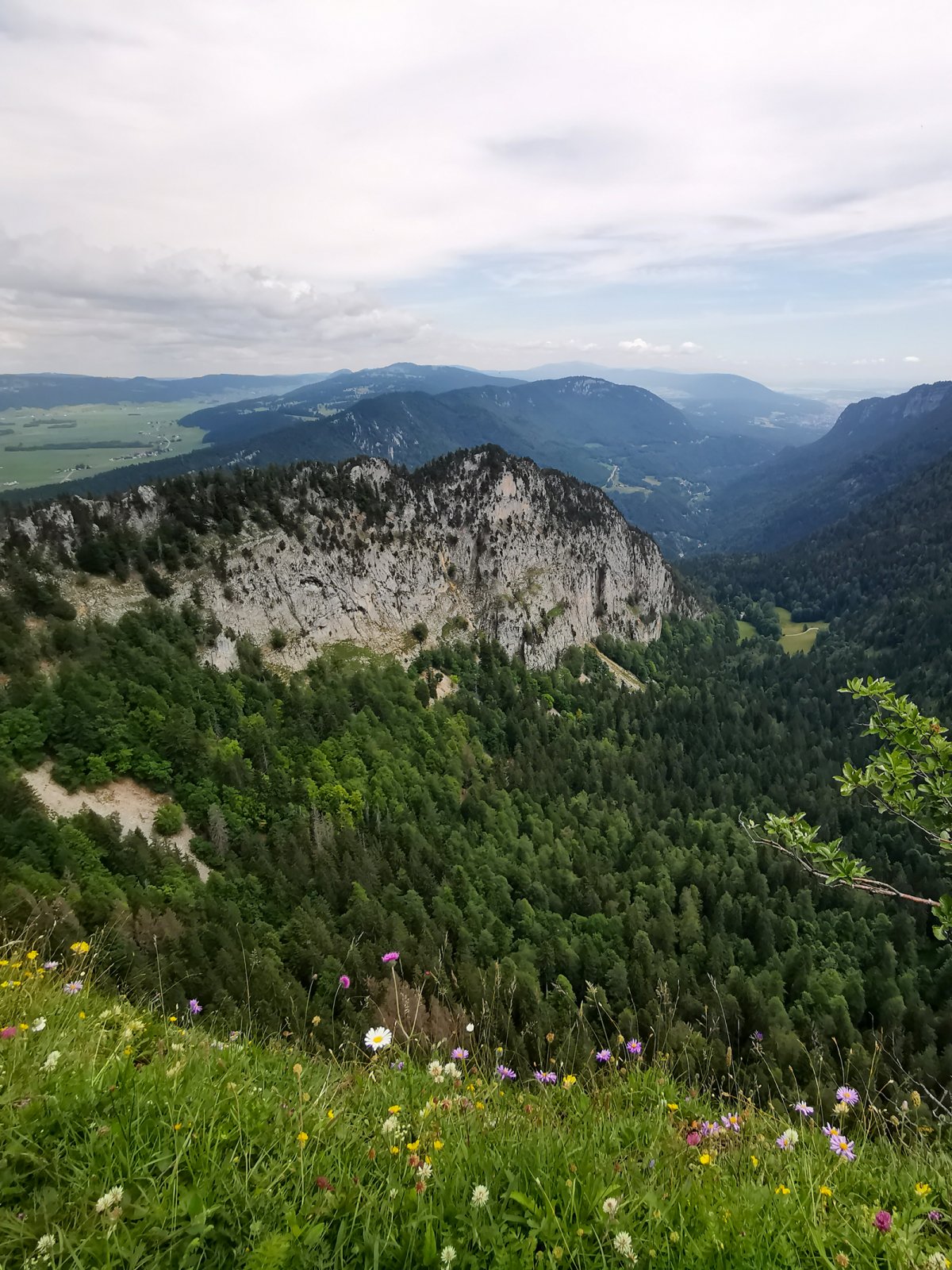

We drive to the village of Noiraigue which has two metered parking lots: Parking des Courtons (Zone 1), and Parking du Devins (Zone 2). The third lot, Zone 3, is reserved for residents.
Hiking to the Creux du Van is considered to be easy, but some parts can be challenging. The Path of the Fourteen Bends is a premonition for the 14 bends to the top. During this curvy climb, the earth can get pretty soft and sludgy due to the retention of moisture.
Once you get past this section, however, the hike gets easier and more rewarding. The views of the rock arena only get better as we climb higher. We take quite a few breaks in order to admire this awesome scenery.
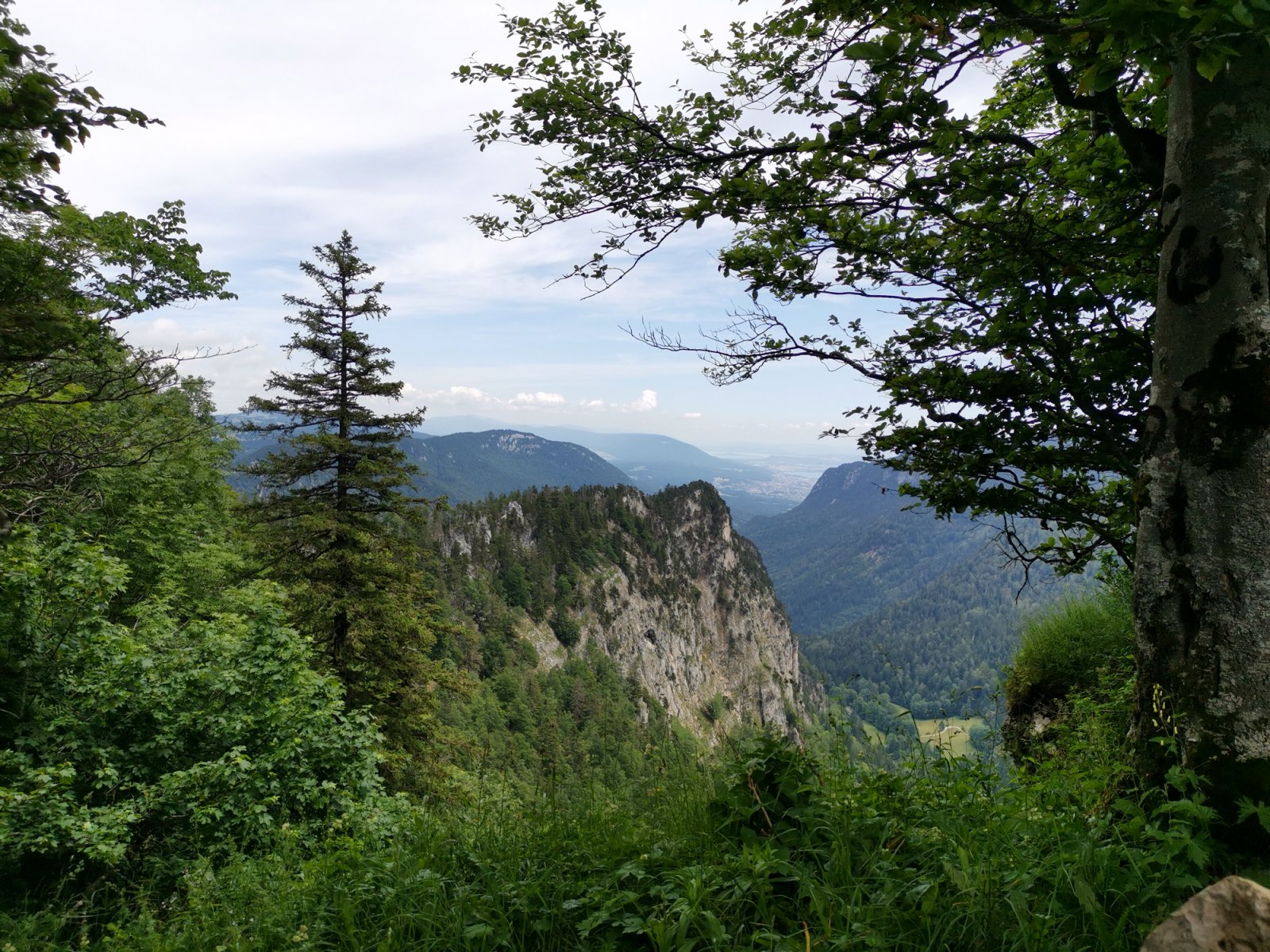
Follow this Creux du Van hiking map
What are some interesting facts about the Creux du Van?
The Creux du Van appears to be a backdrop for many lovers, and for couples looking for an Instagram Wall of Fame moment. Justifiably so, indeed.
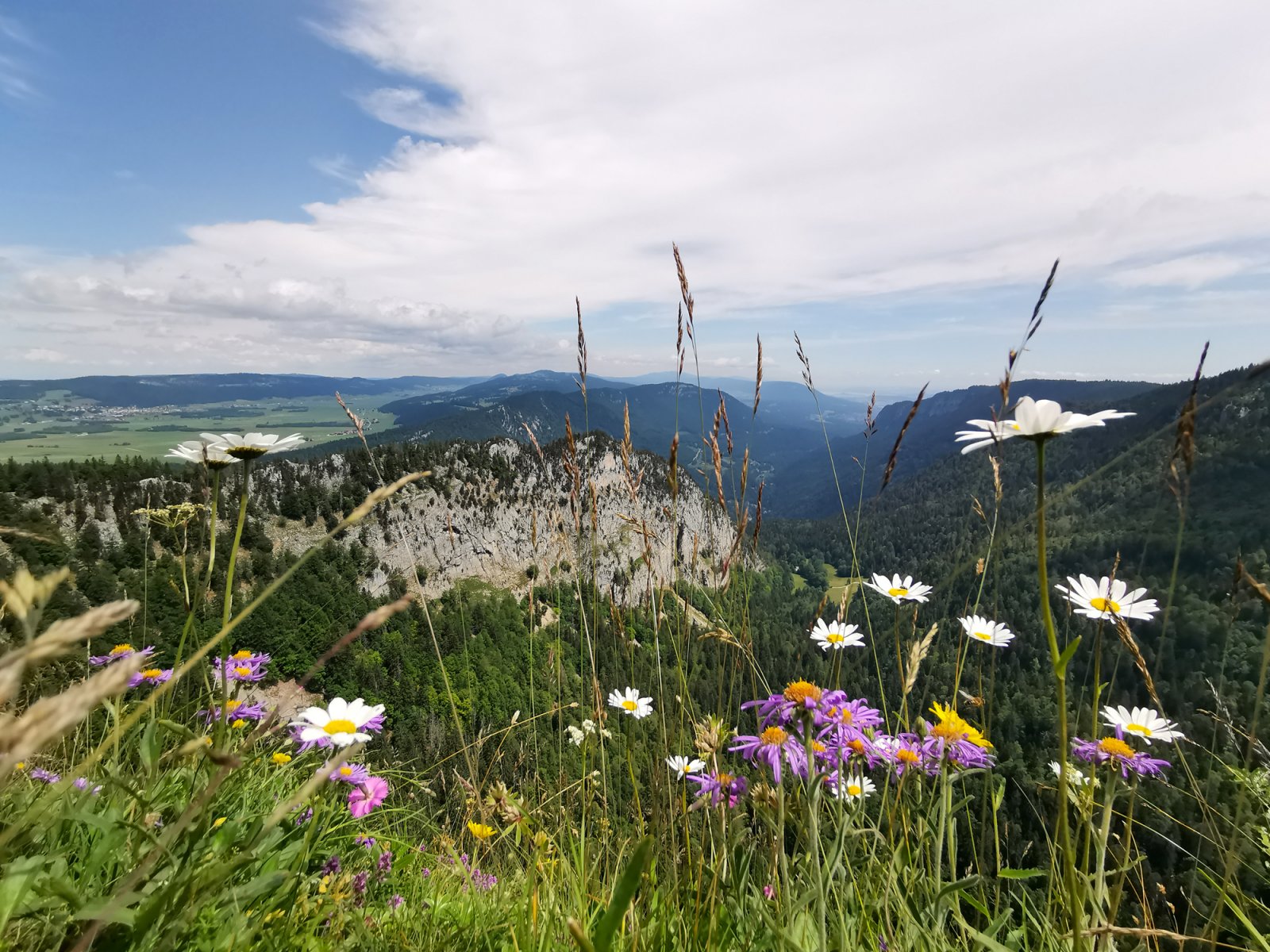
We find a rock to sit on while munching on our sandwiches and drinking some hot coffee. (Yes, I bring hot coffee on every hike!) What a moment to admire nature in all its glory and mystery.
I have never actually read or seen anything about a group of strange trees on top of the cliff. But I thought to myself that the cluster of these trees looks somewhat like a magical forest… The weirdly shaped stems remind me of the forbidden forest from Harry Potter:
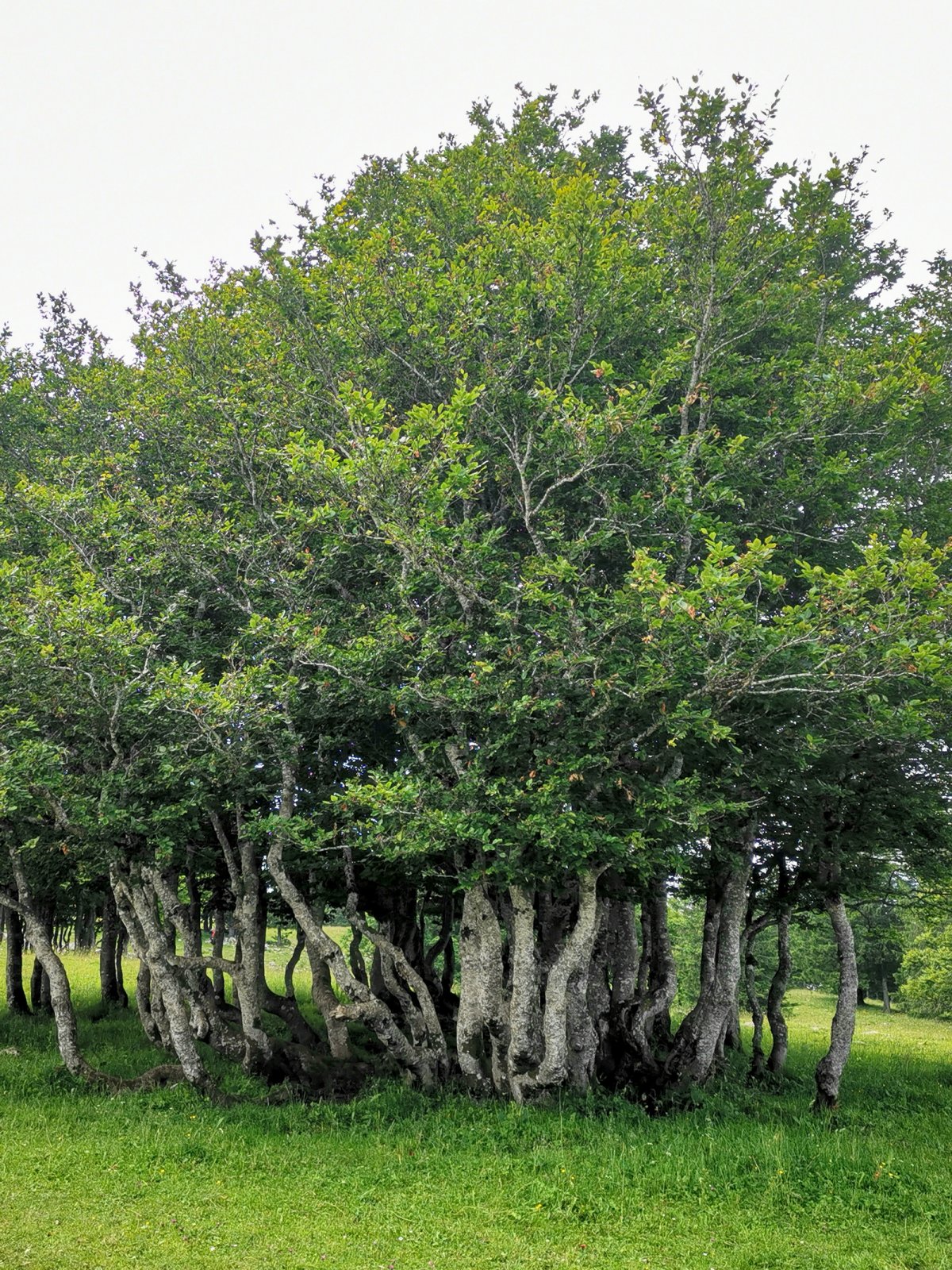
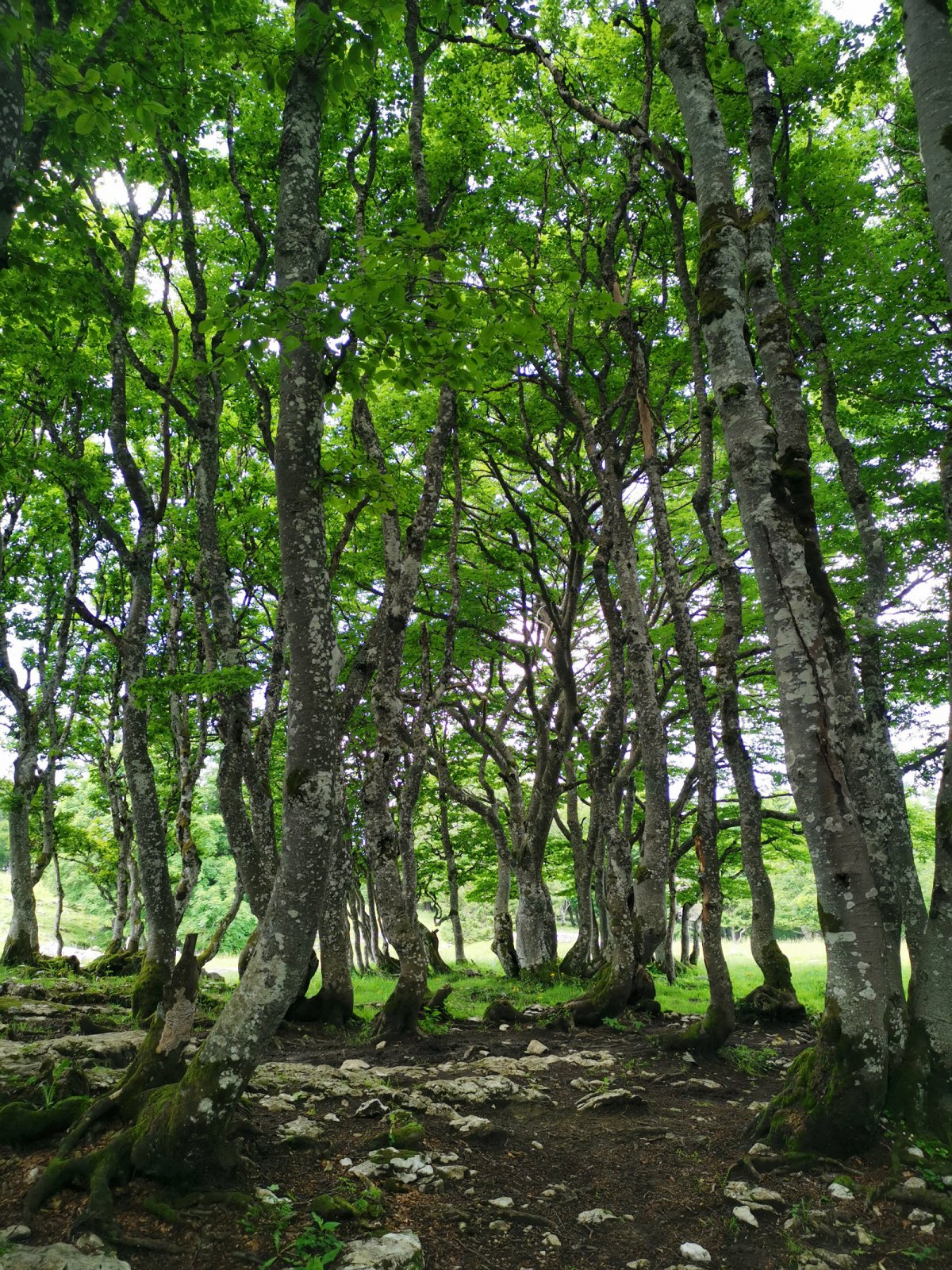
Everything about the place seems to have a story to tell. And so I remember my chat with the geologist, Andreas Dehnert. He'd shared some interesting facts about the Creux du Van:
The underground part of the Creux du Van remains frozen to this day. In technical terms, this is called permafrost, a scenario where there is permanent frost at a given place. At an altitude of roughly 1300 meters above sea level, the Creux du Van is not very high up. Given that it retains permafrost is close to a geological wonder.
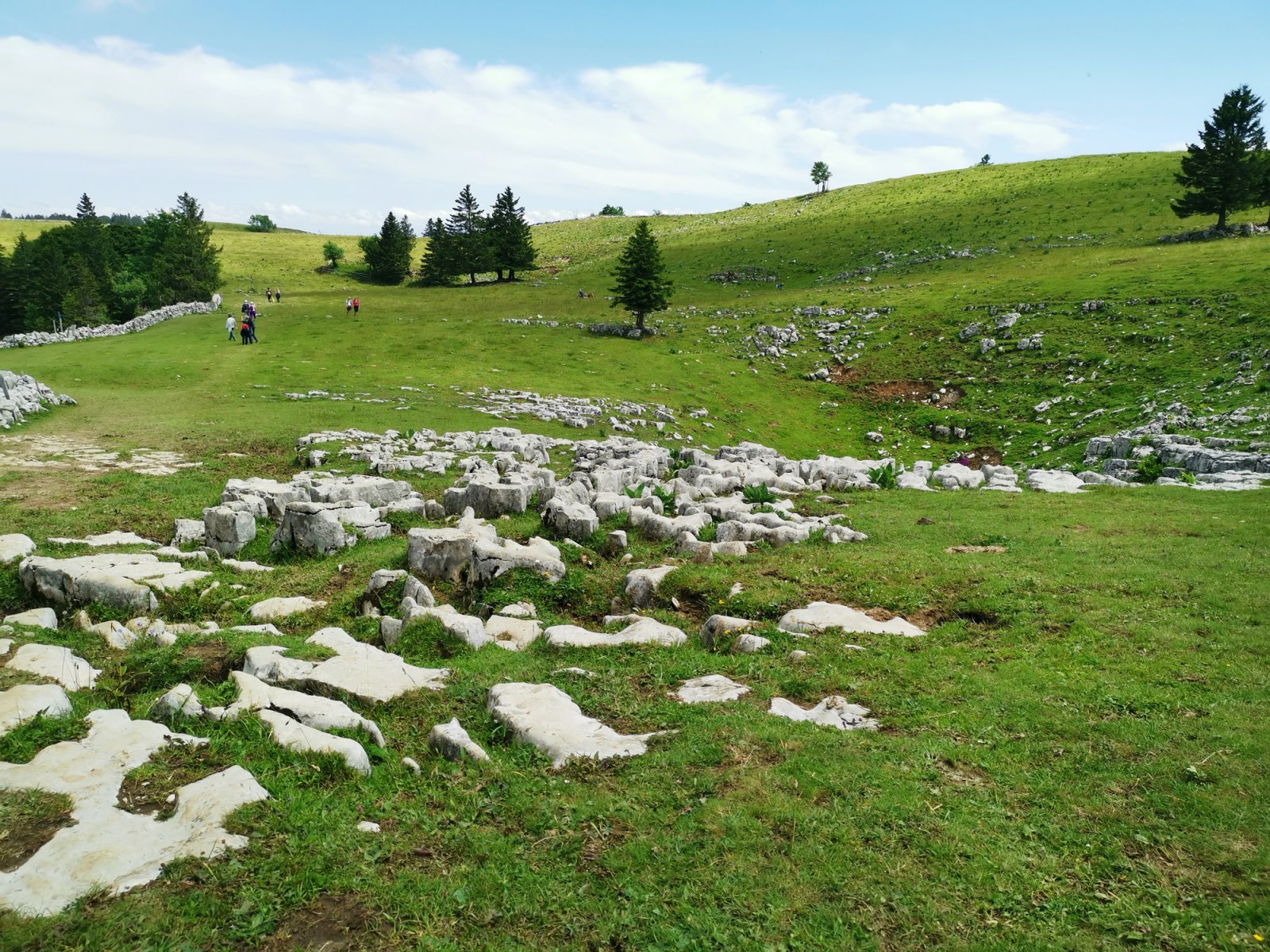
There is a spring in the middle of the Creux du Van called the Fontaine Froide. The well water emerging from the rocks is four degrees Celsius all year round. This phenomenon occurs only in high altitude north-facing alpine areas - or in polar regions!
Any practical advice on visiting the Grand Canyon of Switzerland?
I hope to have piqued your interest in visiting this one-of-a-kind majestic beauty. So, go ahead, pack your backpacks, and do not forget some hot black coffee…
These are all the ingredients for a hike up the Creux du Van. And when the time comes to share your Creux du Van photographs on Instagram, you will realize that no filter is needed.
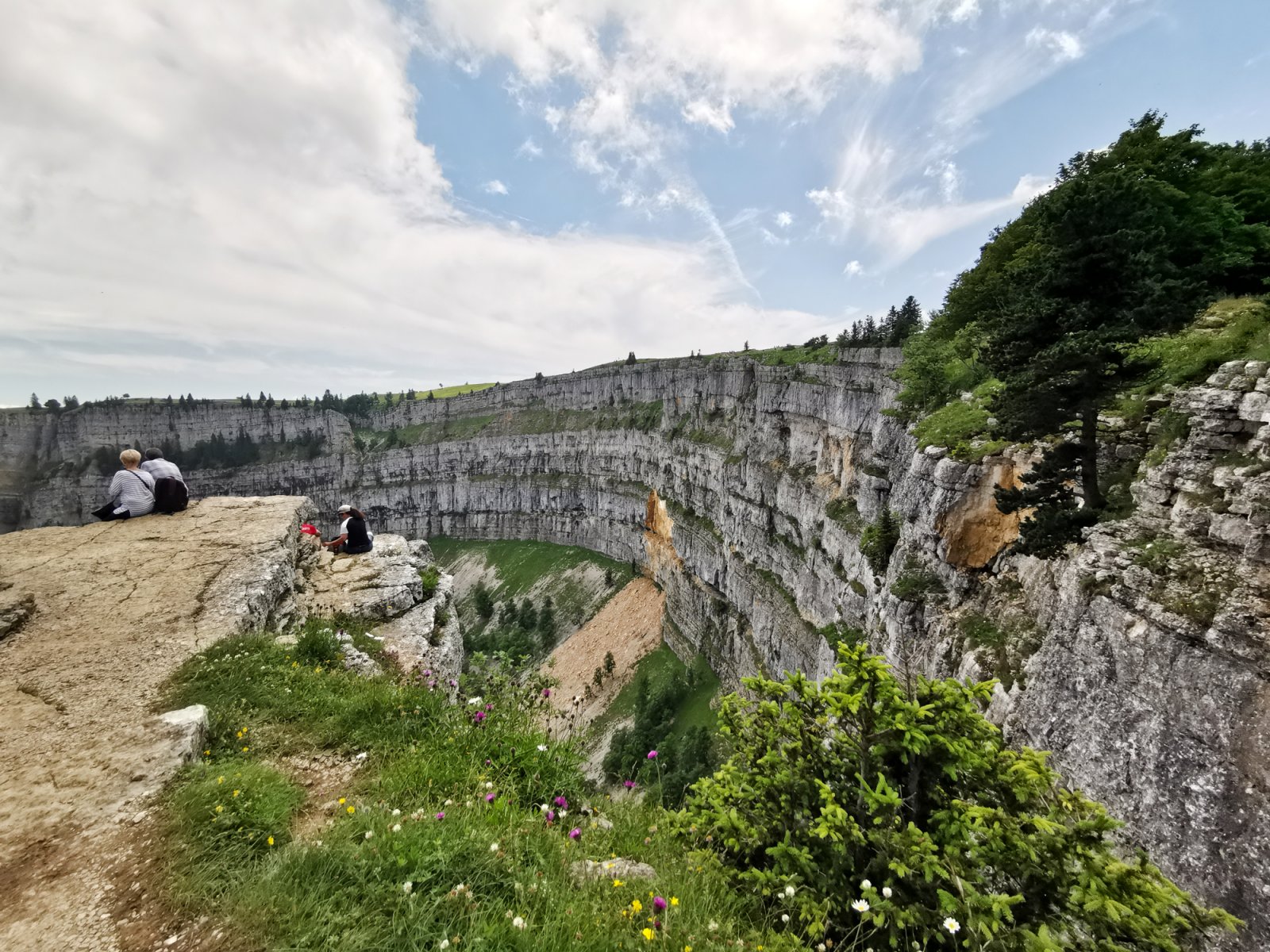
In case you do not want to hike to the top of the Creux du Van, there is an alternative. You may follow the road from either Saint-Aubin-Sauges (on Lake Neuchâtel) or Couvet (Val-de-Travers). There is a large parking lot next to the Ferme Restaurant le Soliat. Just consider that from lake level, your car will be ascending some 900 meters to an elevation of 1382 meters above sea level.
Is there a restaurant on the Creux du Van? The Ferme Restaurant le Soliat is conveniently located some 300 meters from the rock arena. Again, this is also where the parking lot is. The restaurant is open daily from the end of April through November, serving hot and cold dishes. Their cheese fondue is delicious.
Are dogs allowed on the Creux du Van? Technically, yes. But during the summer months, the pastures on the edge of the Creux du Van are home to mother cows and their offspring. It is known that bovines can react to dogs (and their owners) with aggression as they protect their suckling offspring.
Here is a map with the Creux du Van parking lots I have mentioned:

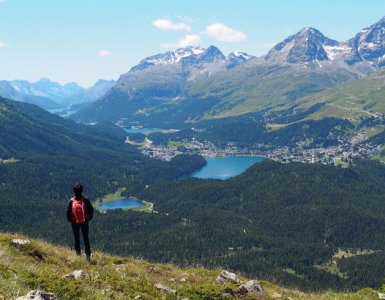
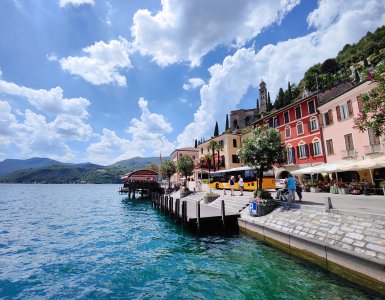


Add comment